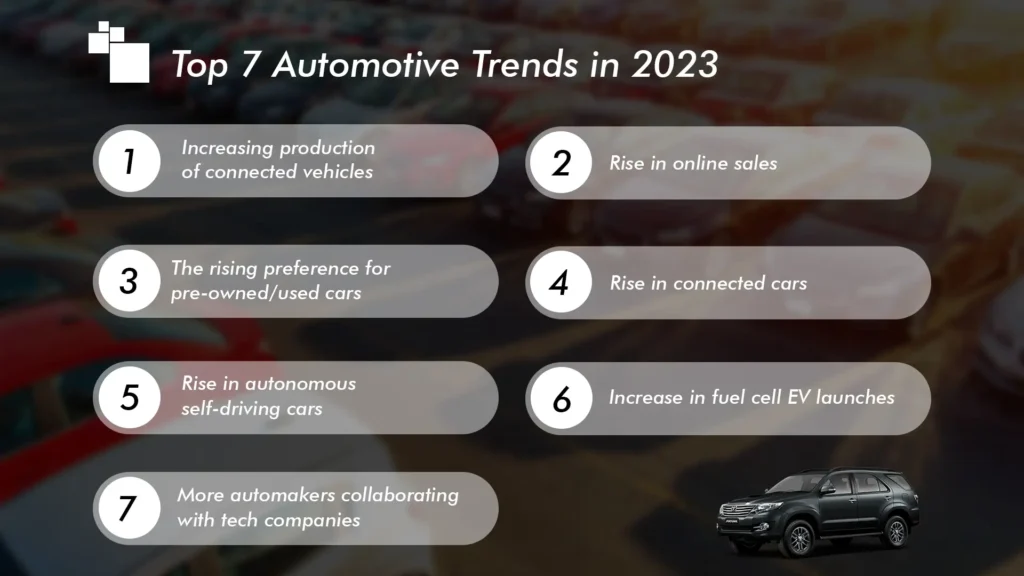Luxury Carmakers Face Headwinds In China: Case Studies Of BMW And Porsche

Table of Contents
The Changing Landscape of the Chinese Luxury Car Market
The Chinese luxury car market, once a beacon of consistent growth, is experiencing a slowdown. This economic deceleration impacts luxury goods sales generally, but the automotive sector faces unique challenges. The traditional image of the luxury car buyer is evolving. Younger, tech-savvy consumers prioritize different features and experiences than their predecessors. They demand advanced technology, personalized experiences, and strong brand storytelling – a significant shift from previous generations' focus purely on prestige and brand heritage.
This shift is compounded by the rise of domestic Chinese luxury brands. Companies like Hongqi and Nio are aggressively challenging established players, leveraging advanced technology and a deep understanding of local consumer preferences. Furthermore, the Chinese government's increasing focus on environmental sustainability is impacting the industry through stringent emission standards and policies promoting electric vehicle adoption.
- Decreasing growth rates in luxury car sales: Year-on-year growth is slowing significantly, forcing luxury carmakers to reassess their strategies.
- Shifting consumer demographics towards younger generations: This demographic prioritizes technological innovation, personalized experiences, and social responsibility.
- Increased competition from domestic brands like Hongqi and Nio: These brands offer competitive pricing and features appealing to the local market.
- Stringent emission standards and environmental regulations: Pressure to produce more sustainable and environmentally friendly vehicles is increasing.
BMW's Challenges and Strategic Responses in China
BMW, a long-standing player in the Chinese market, has witnessed a fluctuation in its market share. While still a major player, it faces intense price competition and the challenge of maintaining a strong brand perception amidst the rise of domestic brands. To counteract these challenges, BMW is employing several strategies. These include the introduction of new models specifically tailored to Chinese consumer preferences, the implementation of highly localized marketing campaigns highlighting Chinese cultural elements and values, and a significant investment in electric vehicle (EV) development and sales within China.
- BMW's sales figures in China (year-on-year comparisons): While precise figures fluctuate, a clear trend of slowing growth is evident.
- Specific marketing campaigns targeting Chinese consumers: BMW leverages digital platforms and influencer marketing to reach the younger demographic.
- Focus on electric vehicle (EV) development and sales in China: BMW is investing heavily in its EV lineup to comply with regulations and cater to growing demand.
- Partnerships and collaborations with Chinese companies: Strategic alliances help enhance local market penetration and understanding.
Porsche's Navigation of the Chinese Market's Headwinds
Porsche, while also facing challenges, holds a comparatively stronger position than some competitors in the ultra-luxury segment. Its strong brand recognition and iconic status provide a certain level of resilience. However, even Porsche must adapt. The brand's strategy focuses on maintaining its premium image while appealing to local preferences. This involves a sophisticated digital marketing approach focusing on online sales channels and personalized customer experiences. Porsche has also emphasized the models that resonate most strongly with Chinese consumers, investing heavily in infrastructure and customer service excellence to solidify its presence.
- Porsche's sales performance in China (comparison to BMW): While sales growth has slowed, Porsche often outperforms BMW in the higher-end luxury segment.
- Porsche's approach to digital marketing and online sales in China: Leveraging WeChat and other digital channels for brand building and sales.
- Emphasis on specific model lines popular in the Chinese market: Catering to the demand for SUVs and other vehicle types popular within the Chinese market.
- Investment in infrastructure and customer experience in China: Creating a premium customer journey both online and in physical showrooms.
Emerging Trends and Future Outlook for Luxury Carmakers in China
The long-term prospects for luxury car brands in China remain positive, but significant adjustments are necessary. The continued growth of electric vehicles and the increasing importance of sustainability are reshaping the industry. Brands that embrace these trends and prioritize environmental responsibility will be better positioned for success. However, intense competition and rapid technological advancements remain substantial challenges. Strategic partnerships and collaborations, along with a deep understanding of Chinese consumer values, will be key to navigating this complex landscape.
- Growth potential in specific luxury car segments (e.g., SUVs, EVs): These segments offer substantial opportunities for growth in the coming years.
- Importance of brand storytelling and emotional connection with Chinese consumers: Building a strong narrative resonates deeply with the younger demographic.
- Challenges posed by technological advancements and competition: Staying ahead of the curve in technology and adapting to competitive pressures.
- Opportunities for partnerships and collaborations to penetrate the market further: Strategic alliances can unlock new markets and distribution channels.
Conclusion: Overcoming Headwinds in the Chinese Luxury Car Market
Luxury carmakers like BMW and Porsche are facing significant headwinds in China, including economic slowdown, changing consumer preferences, and increasing domestic competition. However, their strategic responses, including localized marketing, EV development, and focus on customer experience, demonstrate a commitment to adapting to the unique challenges of this dynamic market. The future of the China luxury car market depends on understanding and responding effectively to these evolving trends. To further explore this fascinating landscape, research the latest China luxury car market trends or delve into the specific China strategies employed by other leading brands. [Link to relevant article/resource here]

Featured Posts
-
 The Visuals Of Sinners Exploring The Cinematography Of The Mississippi Delta
Apr 26, 2025
The Visuals Of Sinners Exploring The Cinematography Of The Mississippi Delta
Apr 26, 2025 -
 Chinas Automotive Industry Assessing Its Global Impact
Apr 26, 2025
Chinas Automotive Industry Assessing Its Global Impact
Apr 26, 2025 -
 Secret Service Investigation Findings On Cocaine Found At White House
Apr 26, 2025
Secret Service Investigation Findings On Cocaine Found At White House
Apr 26, 2025 -
 Chainalysis Acquires Alterya Blockchain Meets Ai
Apr 26, 2025
Chainalysis Acquires Alterya Blockchain Meets Ai
Apr 26, 2025 -
 Discover 7 Exciting New Orlando Restaurants In 2025
Apr 26, 2025
Discover 7 Exciting New Orlando Restaurants In 2025
Apr 26, 2025
